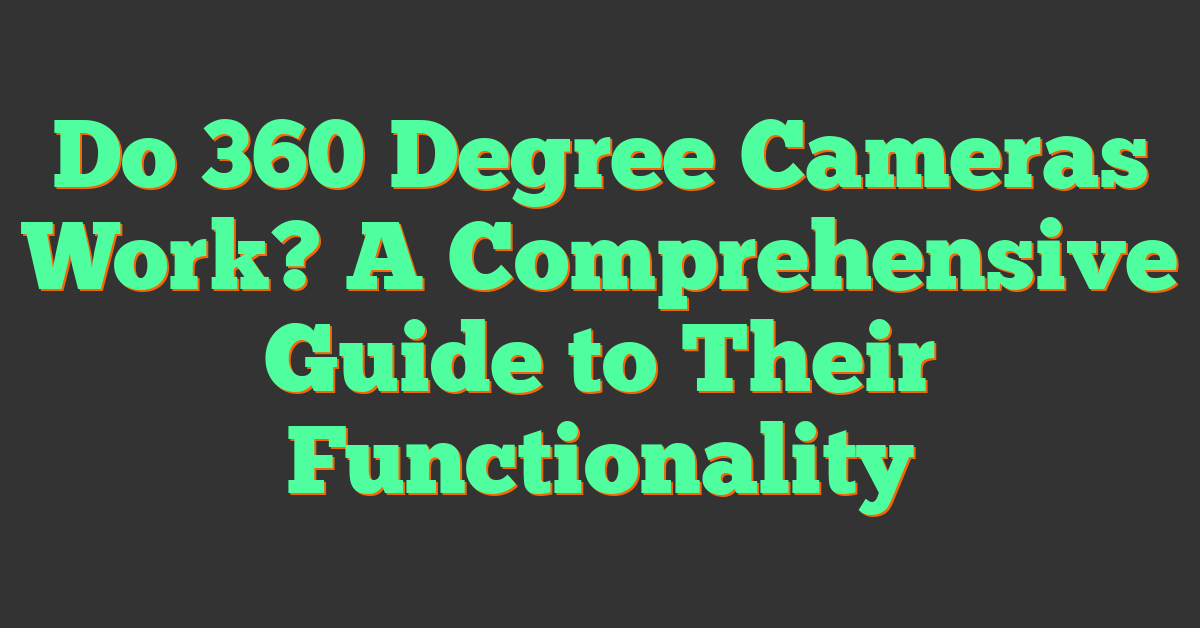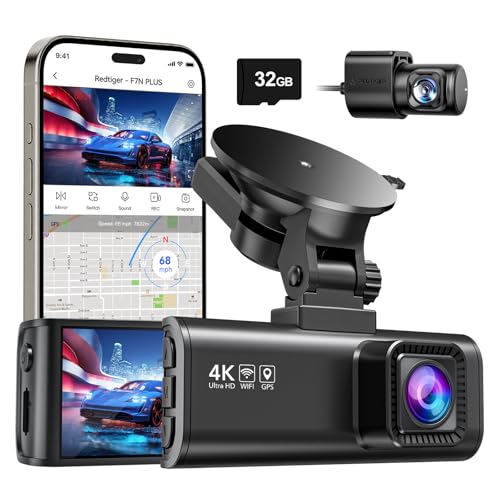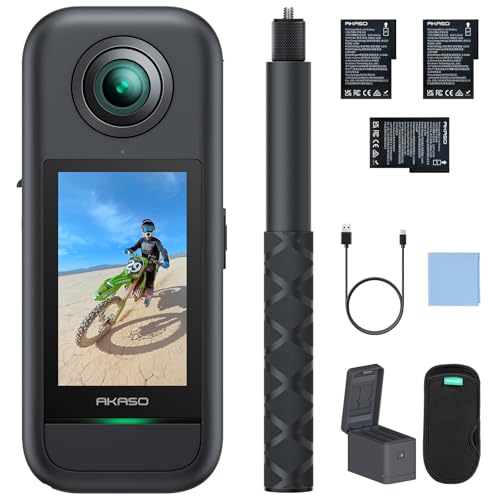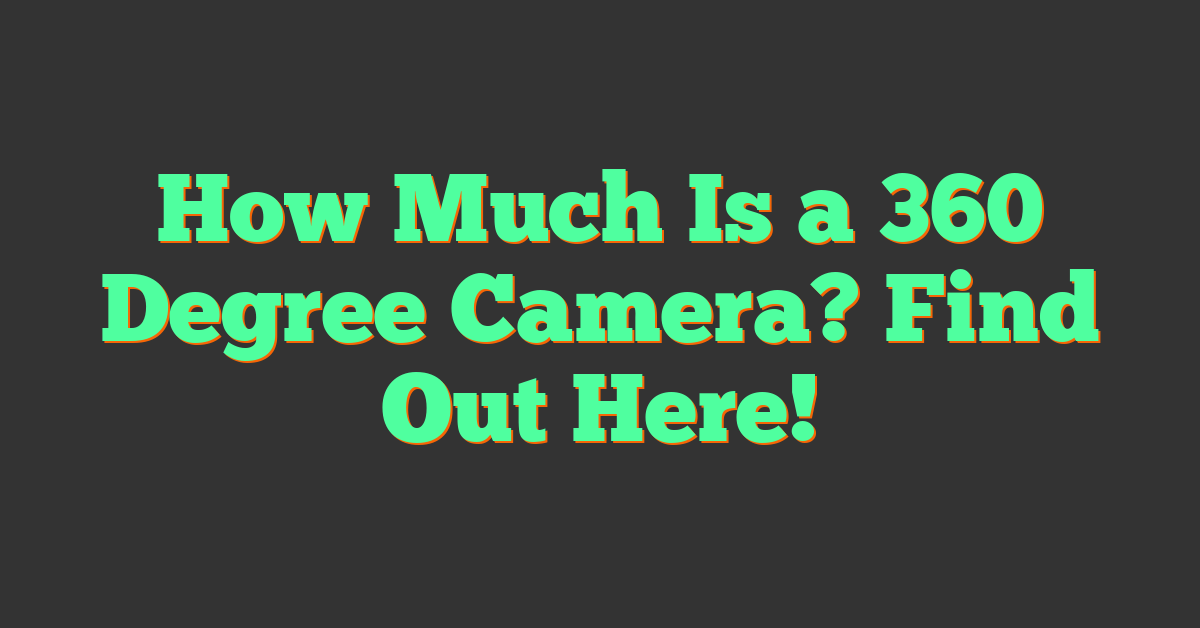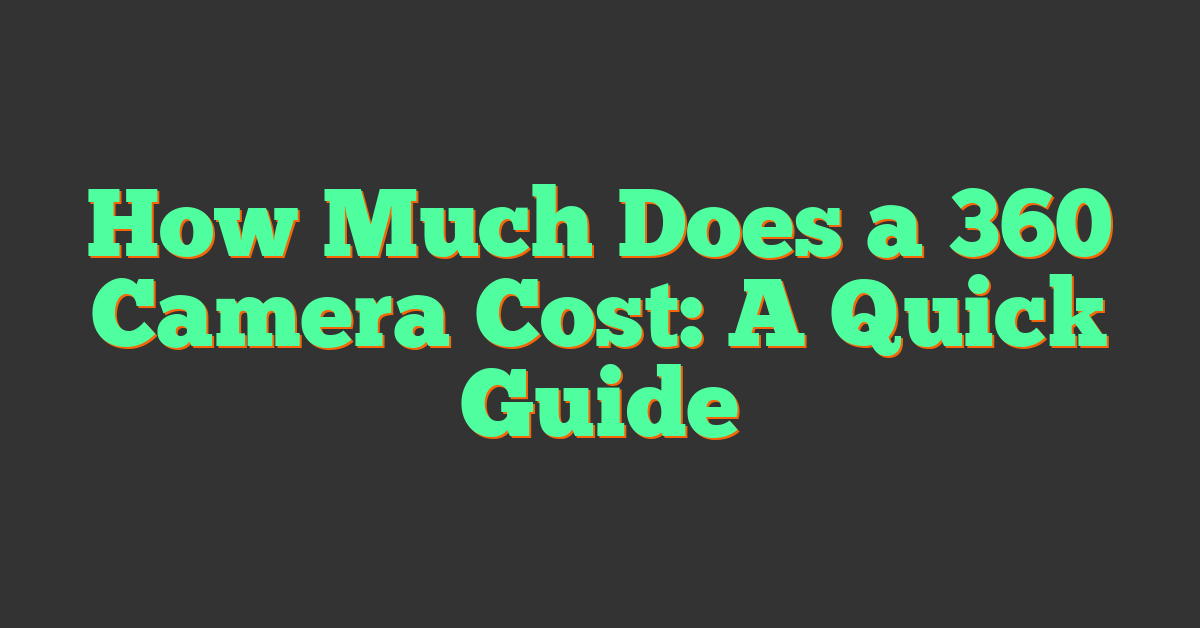If you’re interested in capturing immersive photos and videos, you may have heard of 360-degree cameras. These cameras have become increasingly popular in recent years, but you may be wondering: do 360-degree cameras actually work? The short answer is yes, 360-degree cameras do work, and they can produce stunning, immersive content that makes viewers feel like they’re right in the middle of the action.

360-degree cameras work by using multiple lenses to capture a complete view of the surrounding environment. The lenses are often arranged in a spherical or hemispherical configuration, allowing them to capture a full 360-degree view. The camera then stitches these images together to create a seamless, panoramic image or video. Some 360-degree cameras also use software to enhance the final image, adding features like stabilization or color correction.
While 360-degree cameras can produce amazing results, they do require some knowledge and skill to use effectively. In the following sections, we’ll dive deeper into how 360-degree cameras work, their key features, and how to capture and edit 360-degree content. We’ll also explore the immersive experience of viewing 360-degree content and the future of 360-degree camera technology.
Key Takeaways
- 360-degree cameras use multiple lenses to capture a complete view of the surrounding environment.
- These cameras can produce stunning, immersive content that makes viewers feel like they’re right in the middle of the action.
- While they require some knowledge and skill to use effectively, 360-degree cameras are becoming increasingly popular and are likely to play a larger role in photography and videography in the future.
Understanding 360-Degree Cameras
https://www.youtube.com/watch?v=xqWkJJOcU4g&embed=true
The Basics of How 360 Cameras Work
360-degree cameras are designed to capture a full view of the environment around them. They work by using multiple lenses to capture images or video from different angles. These images or video are then stitched together to create a 360-degree view of the environment.
Most 360-degree cameras use two lenses to capture images or video. These lenses are usually placed on opposite sides of the camera body. The lenses work together to capture a full view of the environment around the camera.
The camera then uses sensors to stitch these images together to create a seamless 360-degree view. The quality of the image or video captured by a 360-degree camera depends on the quality of the lenses and sensors used by the camera.
Types of 360 Cameras
There are two main types of 360-degree cameras: single-lens and dual-lens. Single-lens cameras use a single wide-angle lens to capture a 360-degree view of the environment. Dual-lens cameras, on the other hand, use two lenses to capture images or video from different angles.
Dual-lens cameras are generally considered to be more effective than single-lens cameras because they capture a wider range of images or video. This means that they can create a more seamless 360-degree view of the environment.
When choosing a 360-degree camera, it is important to consider the quality of the lenses and sensors used by the camera. High-quality lenses and sensors will produce better image or video quality. Additionally, some 360-degree cameras may offer additional features, such as image stabilization or live streaming capabilities, which can make them more versatile and useful for different applications.
Overall, 360-degree cameras are an innovative and exciting technology that can be used to capture immersive and engaging images or video. By understanding how they work and the different types available, you can choose the best camera for your needs and start creating your own stunning 360-degree content.
Key Features of 360 Cameras

« Need for Speed 360 Camera: Capturing the Thrill of the Ride
Do 360 Cameras Have Sound? Exploring Audio Features in 360 Cameras »
If you’re looking to capture immersive photos and videos, you might want to consider using a 360 camera. These devices come with a range of features that make them unique and powerful tools for capturing 360-degree content. In this section, we’ll take a closer look at some of the key features of 360 cameras.
Dual Lenses and Field of View
One of the most important features of a 360 camera is its dual lens system. This allows the camera to capture a complete 360-degree view of the scene in front of it. Each lens captures a 180-degree field of view, which means that when the two images are stitched together, you get a seamless 360-degree panorama.
Stitching and Overlap
Stitching is the process of combining the images captured by the two lenses into a single, seamless 360-degree image or video. This is done using special software that comes with the camera or can be downloaded separately. The software uses algorithms to align the images and remove any visible seams or distortions.
Overlap is an important consideration when using a 360 camera. This refers to the amount of overlap between the two images captured by the two lenses. A higher overlap means that the two images will be easier to stitch together, resulting in a smoother and more seamless 360-degree image.
Resolution and Image Quality
Resolution and image quality are also important factors to consider when using a 360 camera. Most 360 cameras capture images and videos at resolutions of 4K or higher, which means that the resulting images are sharp and detailed. However, it’s important to note that the resolution of the final image or video will depend on the stitching process and the quality of the software used.
In addition to resolution, image quality is also affected by other factors such as the dynamic range, color accuracy, and noise levels. Some 360 cameras come with advanced features such as HDR and RAW capture, which can help improve image quality even further.
Overall, the key features of a 360 camera include dual lenses, a wide field of view, advanced stitching algorithms, and high-quality image and video capture. By taking advantage of these features, you can create stunning 360-degree content that immerses your viewers in the scene.
Capturing 360 Photos and Videos
https://www.youtube.com/watch?v=cRzBL4fhDnM&embed=true
Capturing 360 photos and videos is a unique experience that allows you to capture everything around you in one shot. With a 360-degree camera, you can capture stunning panoramic photos and immersive videos that put you right in the middle of the action.
Framing and Exposure
When capturing 360 photos and videos, framing and exposure are crucial. Since the camera captures everything around it, it’s important to position it in the right spot to capture the best shot. You can use the camera’s preview screen or mobile app to adjust the framing and ensure that you’re capturing the entire scene.
Exposure is also important when capturing 360 photos and videos. Since the camera captures everything around it, it can be challenging to get the exposure right. Most 360 cameras have automatic exposure settings, but you can also adjust the exposure manually to get the perfect shot.
Shooting Modes
360 cameras offer various shooting modes to capture different types of photos and videos. For example, some cameras offer a time-lapse mode that captures a series of photos at set intervals to create a time-lapse video. Other cameras offer a burst mode that captures a series of photos in quick succession, which is great for capturing action shots.
When shooting 360 videos, you can also choose between different modes such as standard, time-lapse, or hyper-lapse. Standard mode captures video at a normal speed, while time-lapse mode captures video at a slower speed to create a time-lapse effect. Hyper-lapse mode captures video at a faster speed to create a time-lapse effect with motion.
In conclusion, capturing 360 photos and videos is a unique experience that requires attention to framing and exposure. With various shooting modes available, you can capture different types of photos and videos to create stunning panoramic photos and immersive videos.
The Immersive Experience
https://www.youtube.com/watch?v=iK_nfBKsaDk&embed=true
If you’re interested in capturing and experiencing immersive content, 360-degree cameras are a great way to do so. These cameras can capture everything in a scene, giving viewers the ability to look around and feel like they’re actually there.
Virtual Reality Integration
One of the most exciting aspects of 360-degree cameras is their ability to integrate with virtual reality (VR) technology. By capturing a scene in 360 degrees, you can create a lifelike experience that makes viewers feel like they’re actually there. When viewed through a VR headset, the experience becomes even more immersive, as viewers can look around and explore the scene in real-time.
Interactive 360-Degree Video
Another exciting use for 360-degree cameras is interactive 360-degree video. With this technology, viewers can interact with the video by clicking and dragging to change the camera angle. This gives viewers more control over the experience, making it feel more like they’re actually there.
Overall, 360-degree cameras are a great tool for creating immersive experiences. Whether you’re using them for virtual reality or interactive video, they can help you capture and share content in a way that makes viewers feel like they’re actually there.
Editing and Enhancing 360 Content
https://www.youtube.com/watch?v=Wfn-fzwQwAc&embed=true
Once you have captured your 360-degree footage, the next step is to edit and enhance it. In this section, we will discuss some software and tools that you can use to edit your 360 content, as well as some techniques for re-framing and post-production.
Software and Tools
There are several software programs and tools available for editing 360-degree footage. Some popular options include Adobe Premiere Pro, Final Cut Pro X, and Pinnacle Studio. These programs allow you to import your footage and edit it just like you would with any other video.
When editing 360-degree footage, it is important to keep in mind the dynamic range of the footage. Since 360 cameras capture a wide field of view, the dynamic range can be quite high. This means that there can be a large difference between the brightest and darkest parts of the image. To ensure that your footage looks its best, it is important to use software that can handle this dynamic range.
Re-Framing and Post-Production
One of the benefits of 360-degree footage is that it allows you to re-frame your footage after it has been shot. This means that you can change the perspective of the viewer and highlight different parts of the scene. To do this, you can use software that allows you to re-frame the footage, such as Insta360 Studio.
Another technique that can be used in post-production is HDR (High Dynamic Range) processing. This technique involves combining multiple exposures of the same scene to create an image with a wider dynamic range. This can be especially useful when working with 360-degree footage, as it can help to bring out details in both bright and dark areas of the image.
Finally, when shooting 360-degree footage, it is important to shoot in RAW format. This allows you to capture more detail and information in the image, which can be useful in post-production. By shooting in RAW, you have more flexibility when it comes to adjusting the exposure, color, and other settings in post-production.
Sharing and Social Media
https://www.youtube.com/watch?v=5QHGJgWfnJA&embed=true
If you’re planning to share your 360-degree photos and videos on social media platforms, there are a few things you should keep in mind. In this section, we’ll go over some of the best practices for sharing your 360 content and discuss some of the most popular platforms for 360-degree media.
Platforms for 360 Content
When it comes to sharing your 360-degree content, there are a few platforms that are specifically designed for this purpose. Here are some of the most popular ones:
YouTube: YouTube is one of the most popular platforms for sharing 360-degree videos. To upload your 360 video, you’ll need to make sure it’s in the correct format. YouTube supports 360-degree videos with 24, 25, 30, 48, 50, or 60 frames per second (FPS). You can also add metadata to your video to let YouTube know that it’s a 360-degree video.
Facebook: Facebook is another popular platform for sharing 360-degree photos and videos. To upload a 360-degree photo or video, simply click on the “Photo/Video” button at the top of your News Feed and select the file you want to upload. Facebook will automatically recognize that it’s a 360-degree photo or video and will allow users to interact with it by tilting their phones or dragging their mouse.
Instagram: Instagram also supports 360-degree photos and videos, but there are a few limitations. For example, 360-degree videos can only be up to 60 seconds long, and they can’t be uploaded directly to Instagram. Instead, you’ll need to upload your video to a third-party platform like YouTube and then share the link on Instagram.
Best Practices for Sharing
Now that you know which platforms to use for sharing your 360-degree content, here are some best practices to keep in mind:
Keep it short: 360-degree videos can be immersive, but they can also be overwhelming if they’re too long. Try to keep your videos under two minutes if possible.
Add context: 360-degree photos and videos can be disorienting if viewers don’t know what they’re looking at. Make sure to add captions or descriptions to give your viewers some context.
Go live: If you’re at an event or in a unique location, consider going live on social media. This will allow your followers to experience the moment with you in real-time.
Engage with your audience: 360-degree content can be a great way to engage with your audience. Encourage them to leave comments or ask questions, and be sure to respond to them in a timely manner.
By following these best practices, you can make sure that your 360-degree content is engaging and shareable on social media platforms.
360 Cameras in Different Industries
https://www.youtube.com/watch?v=KPFPuXm2u7I&embed=true
360 cameras have become increasingly popular in recent years and are being used in various industries. They provide a unique perspective that can be used for virtual tours, site surveys, and much more. In this section, we will discuss some of the industries that are using 360 cameras and how they are being used.
Real Estate and Virtual Tours
360 cameras are being used in the real estate industry to provide virtual tours of properties. This technology has revolutionized the way that properties are being marketed and sold. With a 360 camera, potential buyers can take a virtual tour of a property from the comfort of their own home. This saves time and money for both the buyer and the seller.
Real estate agents can also use 360 cameras to create virtual tours of properties that are not yet built. This allows potential buyers to see what the property will look like before it is even constructed. This technology is especially useful for off-plan properties.
Construction and Site Surveys
360 cameras are also being used in the construction industry for site surveys. With a 360 camera, you can capture a complete view of the construction site. This allows you to identify potential issues and plan accordingly. Site surveys can be done more quickly and accurately with a 360 camera.
In addition, 360 cameras can be used to create 3D models of construction sites. This allows architects and engineers to see the site in 3D and make better decisions about the design and construction process.
Overall, 360 cameras are a valuable tool in various industries. They provide a unique perspective that can be used for virtual tours, site surveys, and much more. If you work in real estate or construction, a 360 camera can help you save time and money while improving your workflow.
Choosing the Right 360 Camera
https://www.youtube.com/watch?v=5MvtlBYOFHg&embed=true
Choosing the right 360 camera can be a daunting task, especially if you’re a beginner. There are a lot of options out there, so it’s important to consider your needs and budget before making a decision. In this section, we’ll take a look at some of the best 360 cameras on the market and help you choose the right one for you.
For Beginners and Enthusiasts
If you’re just getting started with 360 cameras, you don’t need to spend a lot of money. There are plenty of affordable options that are perfect for beginners and enthusiasts. One of the best budget 360 cameras is the Insta360 One. It’s easy to use and produces high-quality 360 photos and videos. It also has a modular design, so you can swap in different lenses depending on your needs.
Another great option for beginners is the Ricoh Theta. It’s a compact and lightweight camera that’s perfect for taking on the go. It’s also easy to use and produces high-quality 360 photos and videos.
For Professionals
If you’re a professional photographer or videographer, you’ll want a 360 camera that can produce high-quality content and has advanced features. One of the best 360 cameras for professionals is the Theta Z1. It has a high-resolution sensor and can capture 360 photos and videos in RAW format. It also has advanced features like manual exposure control and HDR mode.
When choosing a 360 camera for professional use, it’s important to consider your specific needs. Do you need a camera that can shoot in low light? Do you need a camera that’s waterproof? Do you need a camera that can shoot in 8K resolution? Make a list of your requirements and choose a camera that meets those needs.
Overall, there are a lot of great 360 cameras on the market. Whether you’re a beginner or a professional, there’s a camera out there that will meet your needs and budget.
Accessories and Additional Equipment
https://www.youtube.com/watch?v=Bee3ycTjI1Q&embed=true
When it comes to 360 cameras, there are a few accessories and additional equipment that can enhance your shooting experience. Here are some of the most popular options:
Tripods and Mounts
A tripod is a must-have accessory for any camera, and 360 cameras are no exception. A tripod will help you stabilize your camera and keep it level, which is especially important when shooting 360-degree footage. You can find tripods that are specifically designed for 360 cameras, or you can use a regular tripod with a specialized mount. Some tripods even come with built-in leveling systems, which can make it easier to get a perfectly level shot.
Another popular accessory is the invisible selfie stick, which allows you to hold your camera above your head without the stick being visible in the final footage. This can be a great way to get a unique perspective on your surroundings.
Specialized Gear
If you’re planning on taking your 360 camera underwater, you’ll need to invest in a waterproof case. These cases are designed to keep your camera safe and dry while you’re swimming or diving. Some 360 cameras are already waterproof, but if yours isn’t, a waterproof case is a must.
Other specialized gear includes backpacks and carrying cases that are designed specifically for 360 cameras. These cases are usually padded to protect your camera from bumps and scratches, and they often have compartments for storing additional batteries, memory cards, and other accessories.
Overall, investing in the right accessories and additional equipment can help you get the most out of your 360 camera. Whether you’re using a tripod to stabilize your shots or a waterproof case to take your camera underwater, there are plenty of options available to help you get the perfect shot.
Future of 360 Cameras
https://www.youtube.com/watch?v=i8EUerX90-0&embed=true
Are you excited about the future of 360 cameras? Well, you should be! The technology is only going to get better and better, and there are some exciting innovations on the horizon.
One area where we can expect to see improvement is in image quality. As 360 cameras become more popular, manufacturers are investing more in research and development to create better sensors and lenses. This means that we can expect to see sharper, clearer images in the future.
Another area where we can expect to see improvement is in high-speed and guaranteed frame rate. This is important because it means that you’ll be able to capture fast-moving action without any blurring or distortion.
The latest generation of HDR technology is also set to revolutionize the 360 camera market. HDR (High Dynamic Range) technology allows you to capture more detail in both the dark and light areas of your images, resulting in more realistic and vibrant photos and videos.
Advanced compression technology is also set to make 360 cameras more practical and user-friendly. This technology allows you to compress large files without losing any quality, which means that you’ll be able to store more photos and videos on your device without running out of space.
Finally, strengthened cybersecurity is becoming increasingly important as 360 cameras become more popular. Manufacturers are investing in better security features to protect your data and prevent unauthorized access to your device.
Overall, the future of 360 cameras looks bright. With better image quality, high-speed and guaranteed frame rate, HDR technology, advanced compression technology, and strengthened cybersecurity, there’s never been a better time to invest in a 360 camera.
Frequently Asked Questions
https://www.youtube.com/watch?v=5xds4olIjw0&embed=true
How do 360-degree cameras create immersive videos?
360-degree cameras capture views in all directions, thanks to multiple lenses that capture images and videos simultaneously. The cameras then stitch together the images or videos to create an immersive, panoramic view. Some cameras do the stitching automatically, while others require software to combine the footage. The result is a video that allows viewers to look around and feel like they’re in the middle of the action.
What are the top 360-degree cameras on the market right now?
There are many 360-degree cameras available on the market, each with its own unique features and specifications. Some popular options include the Insta360 One X2, GoPro MAX, Ricoh Theta Z1, and the Kandao QooCam 8K. When choosing a camera, consider factors such as resolution, image stabilization, ease of use, and compatibility with your editing software.
Can you enhance home security with a 360-degree camera?
Yes, 360-degree cameras can be used to enhance home security. These cameras capture footage in all directions, providing a comprehensive view of your property. They can also be used with software that detects motion and sends alerts to your phone. However, it’s important to note that the use of cameras for surveillance purposes may be subject to local laws and regulations.
What are the pros and cons of using a 360-degree camera in a vehicle?
Using a 360-degree camera in a vehicle can provide a more comprehensive view of the surroundings, helping to prevent accidents and improve safety. However, the cameras can be expensive and may require professional installation. Additionally, some cameras may be distracting to the driver, and the footage may be subject to privacy concerns.
What should you consider when pricing 360-degree cameras?
When pricing 360-degree cameras, consider factors such as resolution, image stabilization, ease of use, and compatibility with your editing software. More expensive cameras may offer higher resolution and better image stabilization, while cheaper cameras may require more manual editing and post-processing. Additionally, some cameras may require additional accessories, such as tripods or mounts, which can add to the overall cost.
What’s the ideal placement for a 360-degree camera to capture everything around it?
The ideal placement for a 360-degree camera depends on the specific use case. For example, if you’re using the camera for home security, you may want to place it in a central location that captures the entire property. If you’re using the camera for action sports, you may want to mount it on a helmet or other gear to capture a first-person view. Ultimately, the placement should be chosen to provide the best possible view of the subject matter.

